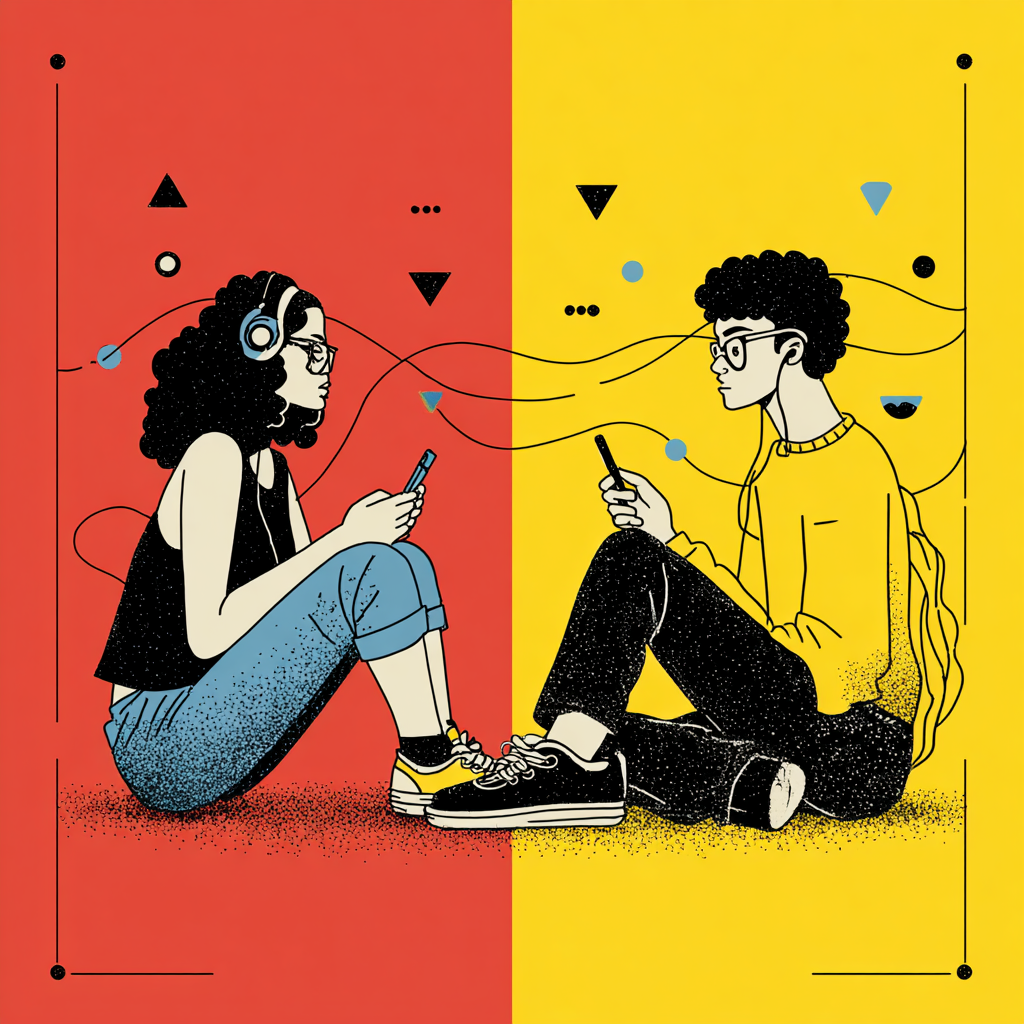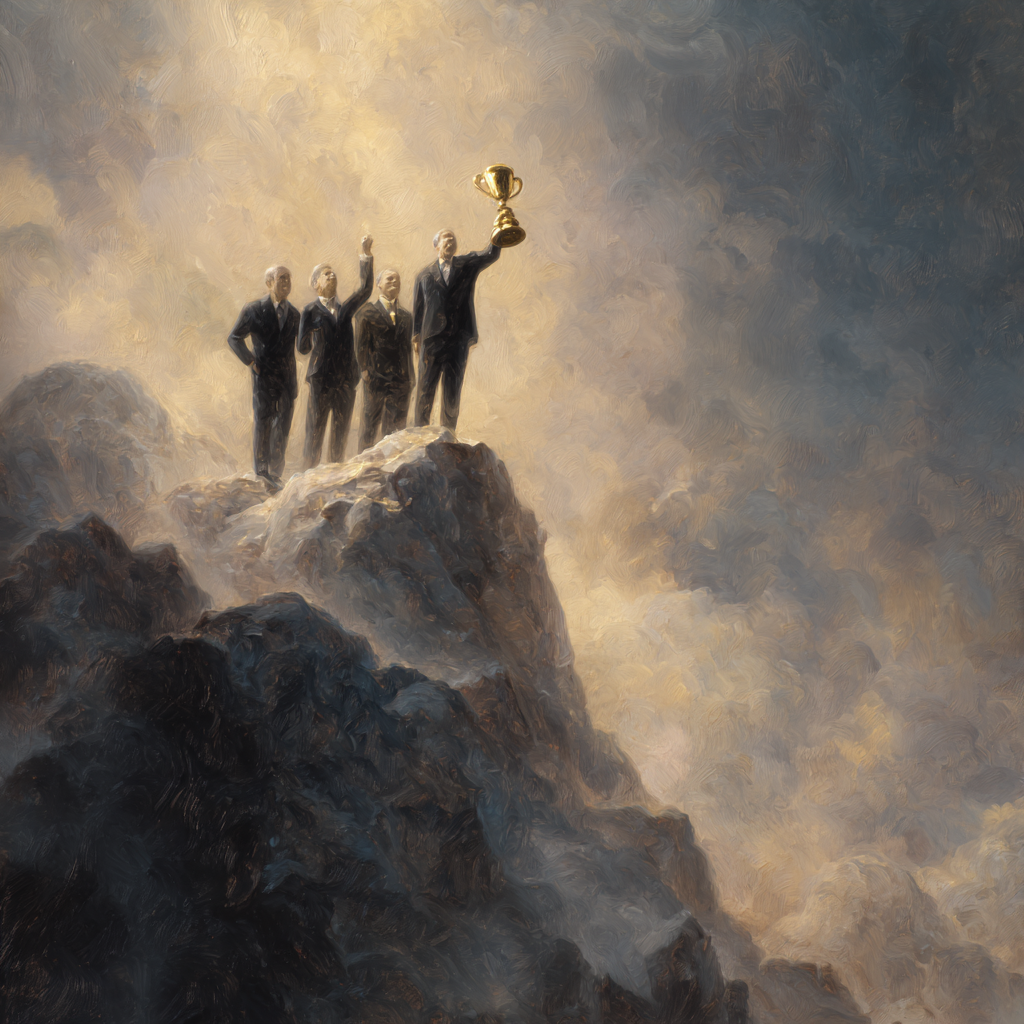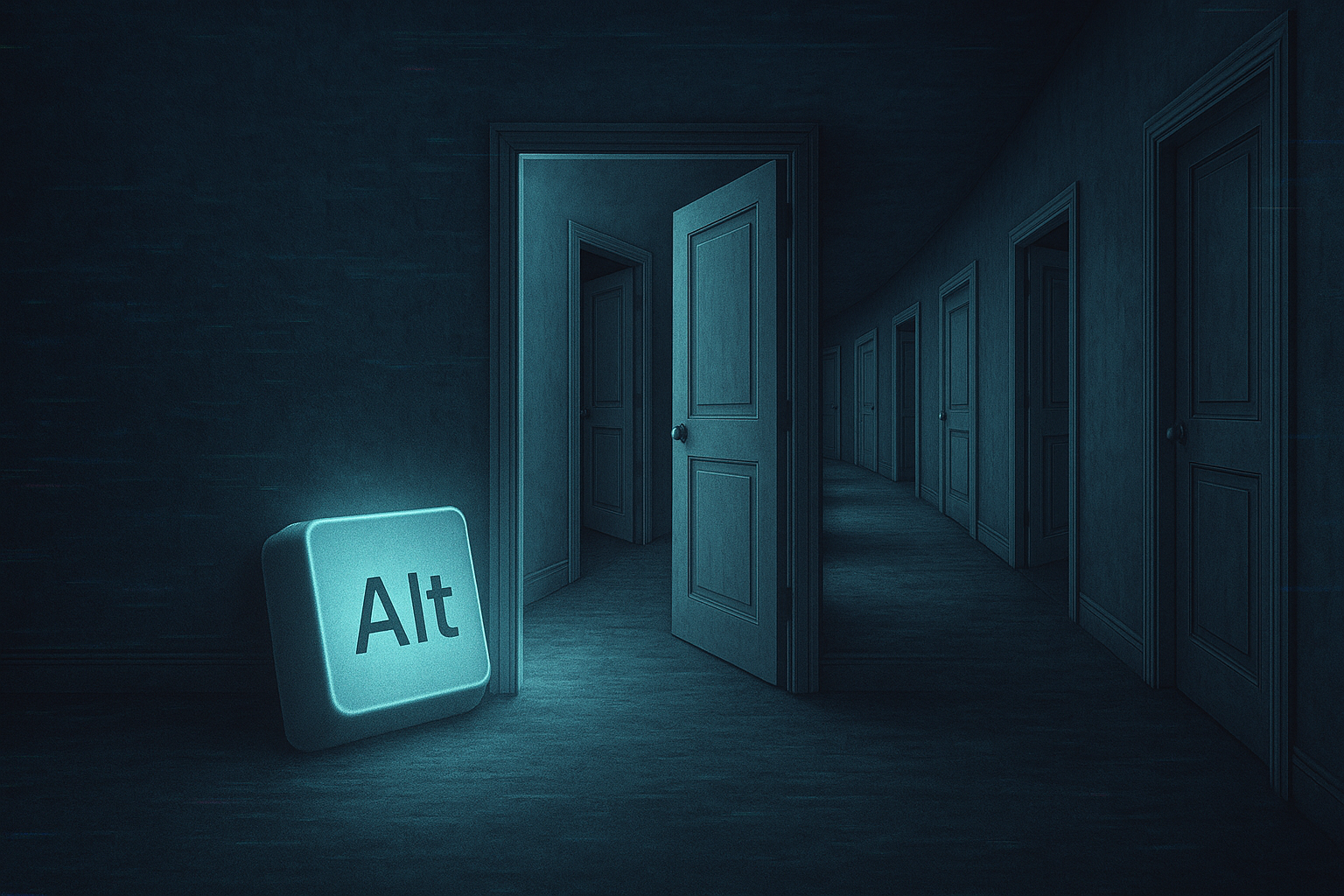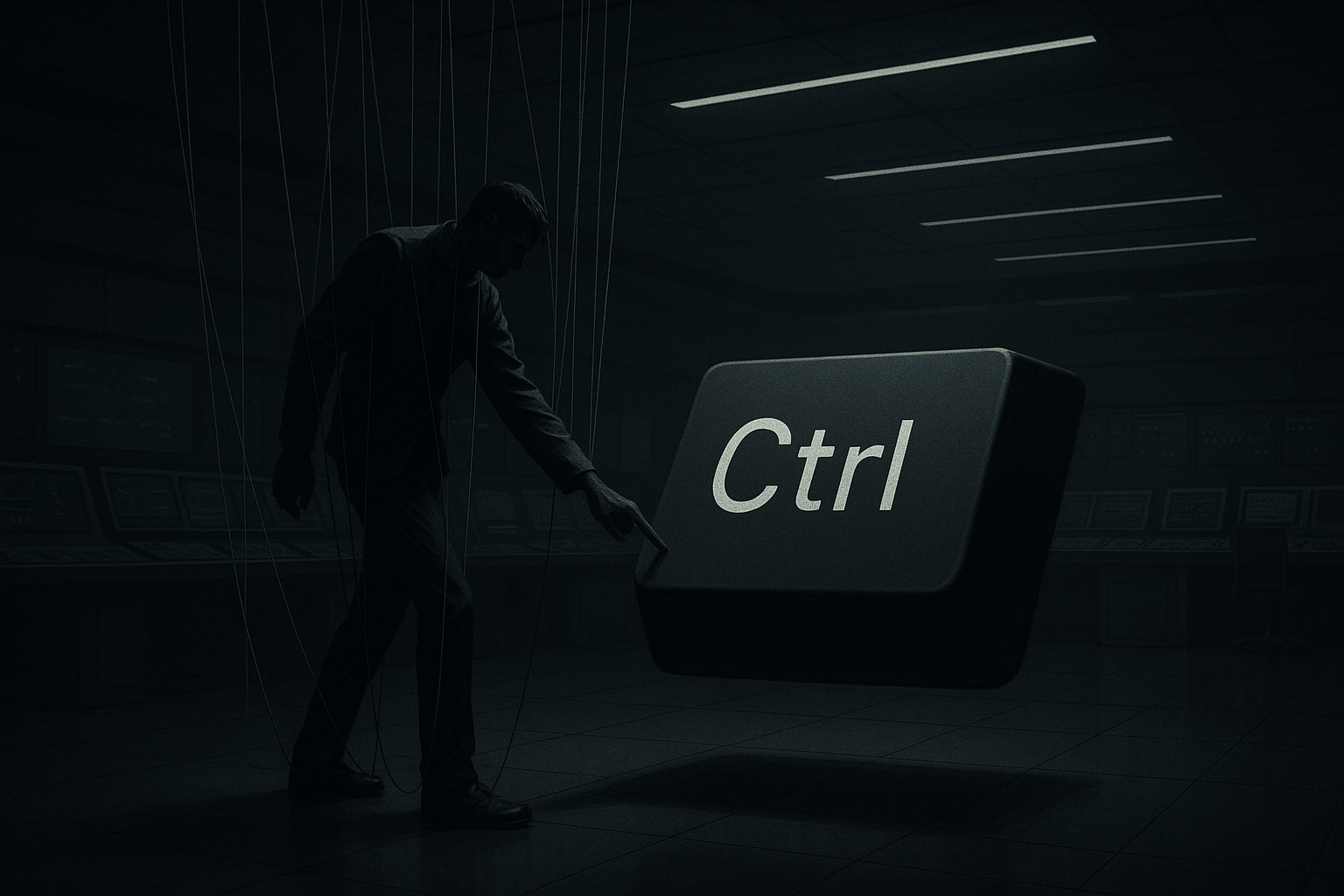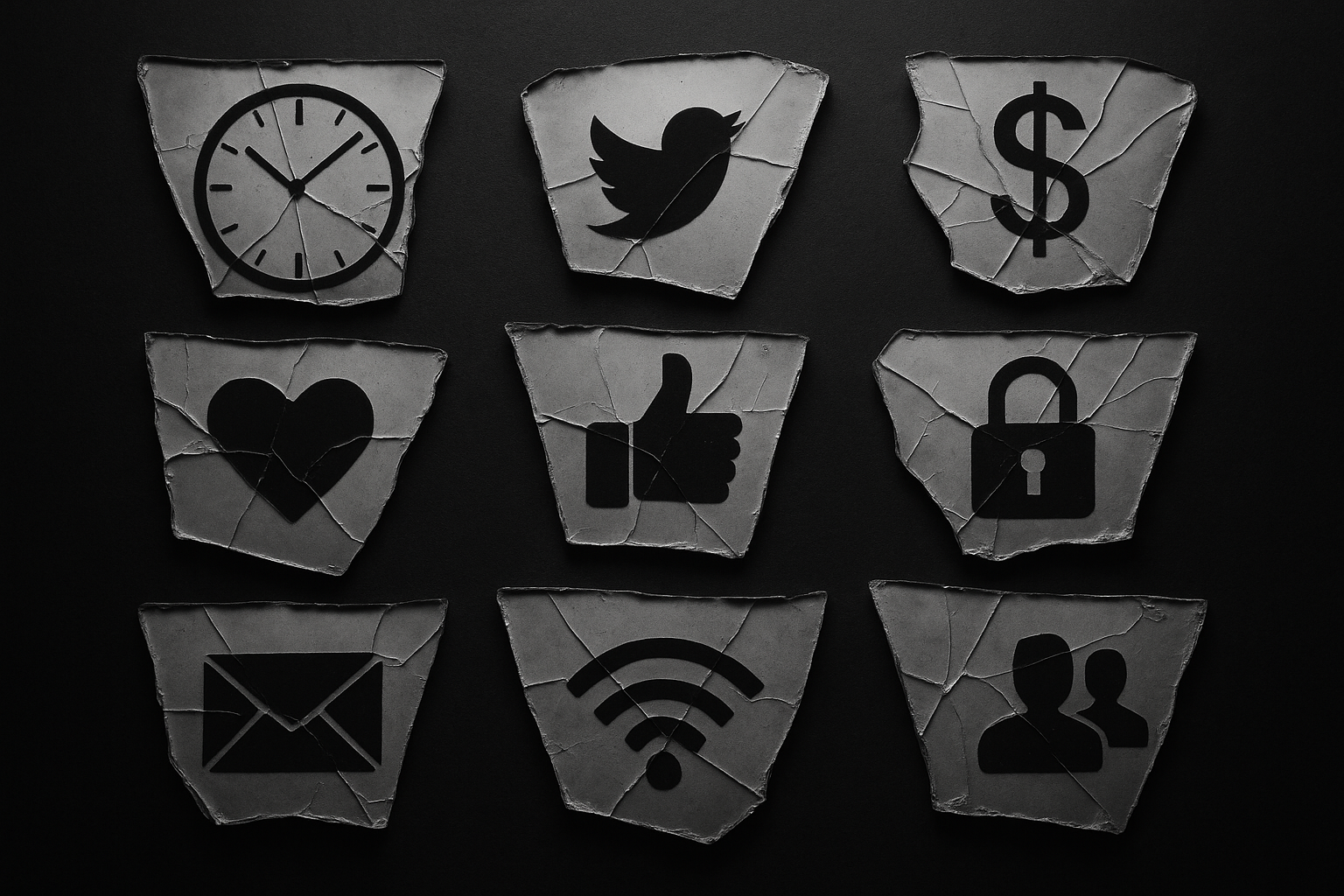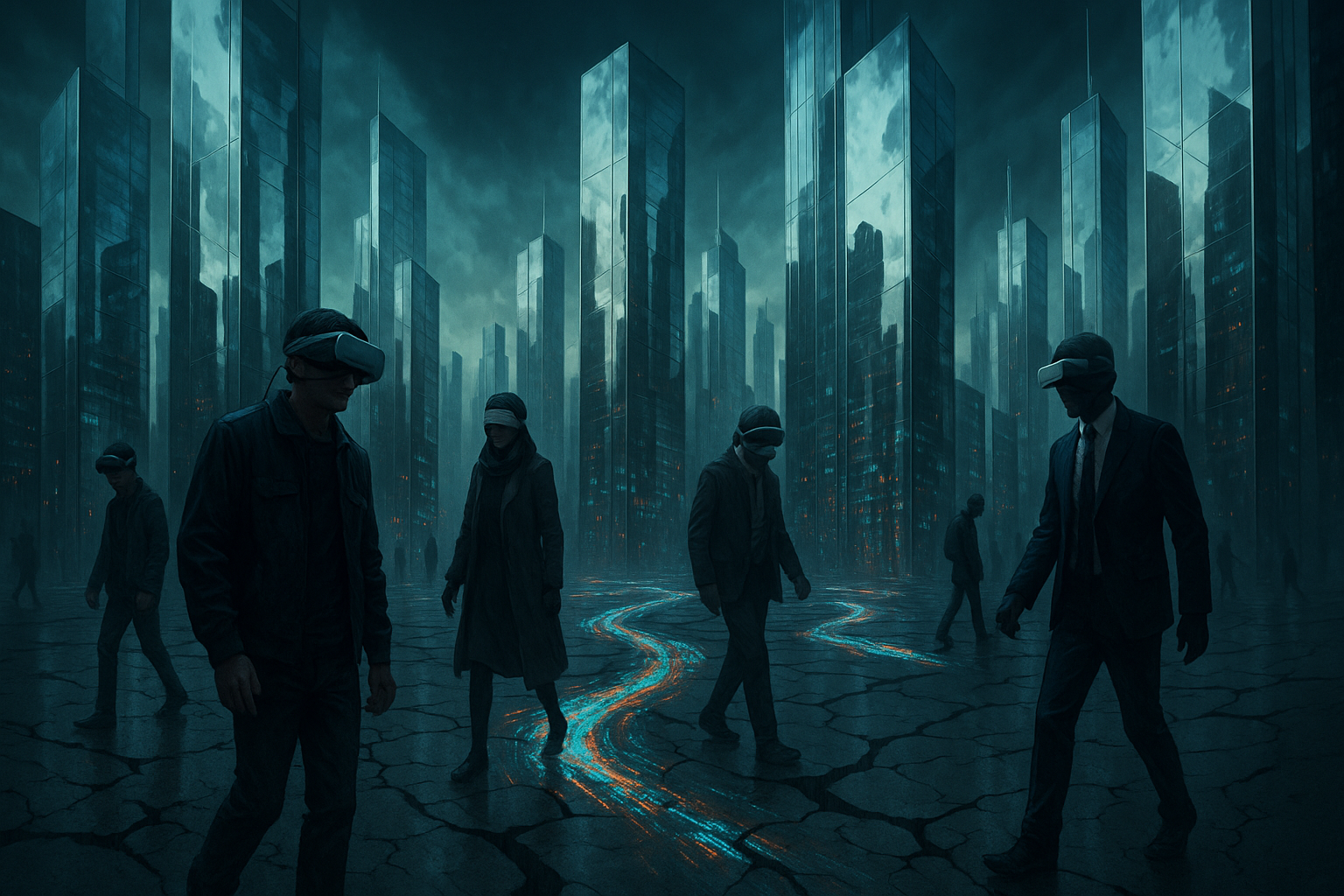Introduction: Living in the Age of Constructed Reality
We are all deluded. Not in the clinical sense, but in the cultural one. Delusion isn’t just an affliction of the few—it’s the architecture of the many. It’s the scaffolding of modern life, reinforced by institutions, platforms, and ideologies that normalize the absurd, mask contradictions, and reward illusion over truth.
In today’s world, delusions aren’t mistakes—they’re systems. They’re engineered, distributed, and monetized. Whether through the glowing promises of Silicon Valley, the glamorized hustle of social media, or the comforting myths embedded in politics and education, we are encouraged to participate in realities that serve someone else’s version of the truth.
To examine delusion isn’t to mock belief—it’s to interrogate how beliefs are built, sustained, and leveraged. It is an invitation to step outside the simulation, however briefly, and ask: What myths am I living inside? Who benefits from them? And what happens if I opt out?
Delusion as a Design Choice
Modern delusions aren’t accidental—they are deliberately designed. Whether it’s the sleek minimalism of an app interface or the cheerful branding of surveillance capitalism, technology today isn’t just solving problems—it’s telling stories. And those stories are often more powerful than the code beneath them.
Consider how most digital interfaces present users with a feeling of agency: choose your preferences, customize your feed, tailor your experience. But behind these affordances lies a rigid system, one where real control is limited and often illusory. The “choice” is usually pre-curated, the algorithm always watching.
Delusion, in this context, becomes a design feature—not a bug. It’s easier to gain trust when users feel empowered, even if that empowerment is cosmetic. From UX to branding to policy, modern design often prioritizes emotional compliance over informed consent. It reassures rather than reveals.
And yet, not all design must deceive. Some creators are now exploring frictional design, critical interfaces, and software that reveals its limitations. These rare but powerful efforts challenge the narrative that design should always be seamless, pleasurable, or invisible. Because sometimes, the glitch is the truth trying to surface.
The Myth of Infinite Growth
One of the most pervasive and dangerous delusions of our time is the belief in infinite growth. It’s a foundational myth of modern economics, especially capitalism—a tale in which value can be extracted endlessly, resources are forever scalable, and the market is an eternal frontier.
This belief is not just irrational; it’s existentially disastrous. Our ecosystems are finite, our energy is limited, and the planet’s patience is running out. Yet the tech industry, venture capitalists, and policymakers still act as though innovation will always outrun depletion.
We build startups with exit strategies, not sustainability. We praise exponential metrics without asking exponential what. And we punish stagnation as if it were a sin, rather than a symptom of hitting natural limits.
The myth of growth is so embedded that questioning it sounds radical. But the alternative is not regression—it’s recalibration. Degrowth, circular economies, post-growth policies—these aren’t utopian dreams. They are attempts to replace delusion with durability.
Productivity as Moral Worth
In a society obsessed with output, productivity has morphed into a moral compass. We praise the busy, romanticize burnout, and treat exhaustion as a badge of honor. The message is clear: to be valuable, you must be constantly producing. Rest is laziness. Idleness is guilt. Silence is failure.
This delusion—rooted in both capitalist efficiency and Protestant work ethics—has saturated every aspect of life. From time-blocking apps to gamified to-do lists, we’re encouraged to treat every waking moment as a monetizable asset. Even our leisure must be optimized for improvement, tracked and measured by wearable tech.
But what if worth isn’t measured by output? What if slowness, contemplation, and even failure have intrinsic value?
To opt out of the productivity cult is to reclaim your humanity. It is to say that life is not a project, and you are not a machine. In this light, unstructured time becomes radical. Doing nothing becomes political. And redefining success becomes an act of moral resistance.
Digital Identity and the Illusion of Self
Who are you online? A username? A curated persona? A stream of photos, tweets, and “likes”? In digital spaces, identity is fluid—but also fragile. We are encouraged to brand ourselves, not just express ourselves. The result is a new kind of selfhood—part performance, part projection, and rarely whole.
Social media in particular feeds the illusion that we can control how others see us. With every post, we reinforce a version of ourselves—clever, aesthetic, successful. But maintaining this version requires constant vigilance and emotional labor. Authenticity becomes diluted, not celebrated.
This identity delusion isn’t just personal—it’s structural. Platforms profit from engagement, and nothing engages more than identity crises, comparison traps, and tribal belonging. So the system nudges us toward division, validation, and constant online presence.
Breaking this spell requires bravery. It means risking irrelevance. It means letting go of the need to be seen in favor of the need to be real. In the noise of algorithmic selves, silence can be revolutionary.
Technological Salvation Narratives
Tech used to be a tool. Now it’s a savior. From Silicon Valley boardrooms to TED stages, we’re told again and again: technology will solve climate change, cure disease, fix inequality, democratize everything. We don’t need revolution, just the next app update.
This is a seductive story—especially in a world full of chaos and crisis. But it’s also a dangerous delusion. Because when we believe that code can replace community, or that algorithms can outthink ethics, we outsource human responsibility to machines.
The gospel of innovation often masks a lack of imagination. Instead of addressing root causes, we throw tools at symptoms. Instead of asking who benefits, we ask how to scale. And instead of interrogating whether something should be built, we marvel that it can be.
What if salvation doesn’t lie in invention, but in introspection? What if some problems aren’t technical but moral, cultural, historical? The real future might not be more tech—but more truth.
Political Theater and Manufactured Consent
In the age of information overload, politics has become less about policy and more about performance. Platforms amplify spectacle. News cycles chase outrage. And public discourse is increasingly shaped not by facts, but by emotionally engineered narratives. We are no longer informed—we are managed.
This is the machinery of manufactured consent: the subtle coordination of media, algorithms, and influence to guide opinion, shape perception, and create the illusion of democratic participation. It’s not censorship by removal, but censorship by saturation—burying truth in a landslide of noise.
Confirmation bias becomes currency in this landscape. Filter bubbles keep us safe from dissonance. Algorithms feed us what we want to hear until belief ossifies into identity. We don’t just consume opinions—we become them.
To resist political delusion, we must decouple information from validation. We must learn to sit with discomfort, question narratives, and reclaim the act of thinking as a civic duty—not just a private indulgence.
The Education Illusion
Education, we are told, is the great equalizer. A path to wisdom, opportunity, and enlightenment. But scratch the surface and a different picture emerges: standardized testing over critical thought, curriculum shaped by politics, and institutions designed more for sorting than for liberating.
School often teaches conformity, not creativity. It rewards obedience, not questioning. The goal isn’t to think differently—but to think efficiently, within boundaries set by economic and cultural forces. Degrees become passports to employment, not tools for transformation.
The delusion here is not that education is bad, but that it is neutral. In truth, it is deeply ideological. What we teach, how we teach, and who decides—these are not apolitical choices. They reflect and reinforce the power structures that shape society.
Reimagining education means freeing it from institutional inertia. It means seeing learning not as preparation for work, but as preparation for life. True education doesn’t domesticate the mind—it liberates it.
The Delusion of Data Neutrality
In the digital era, data is revered as the ultimate truth. Numbers don’t lie, we’re told. Metrics are objective. Algorithms are impartial. But this faith in data conceals a dangerous fallacy: that information is neutral and its interpretation, pure.
The reality is that all data is collected with intent, filtered through context, and shaped by the biases of its creators. Algorithms reflect the assumptions of their programmers. Predictive models reproduce historical inequalities. And dashboards often display what’s measurable—not what matters.
The delusion of neutrality allows harmful systems to masquerade as fair. It gives decision-makers plausible deniability. It turns moral choices into technical ones. And it discourages critical scrutiny in favor of blind trust.
We need to treat data not as destiny, but as a starting point. Ask: who benefits from this dataset? What’s missing? Who was counted—and who wasn’t? Truth is never just in the numbers. It’s in the questions we ask of them.
Consumerism and the Mirage of Choice
We are told that choice equals freedom. That the ability to select from thousands of products, platforms, and identities is the ultimate expression of individuality. But the truth is that most of our choices are illusions—carefully curated, pre-approved, and designed to keep us within the system.
Consumer culture thrives on the belief that buying is empowering. It offers solutions to problems it helped invent: beauty products for insecurities it magnifies, gadgets for convenience it complicates, and endless options that leave us more anxious than liberated.
This delusion obscures deeper truths. That true freedom doesn’t come from more things, but from fewer compulsions. That autonomy isn’t found in shopping carts, but in self-awareness. And that minimalism isn’t an aesthetic—it’s a form of quiet rebellion against the noise of desire.
To see beyond the mirage of choice is to reclaim your agency. It is to recognize that opting out can be more powerful than opting in. It is to want less—and be more.
Wellness Culture and Toxic Positivity
Self-care is essential. But in today’s world, even healing has been commodified. The wellness industry, worth billions, promises inner peace for a price—mindfulness apps, detox kits, spiritual retreats, and influencer-endorsed enlightenment.
What started as a movement to restore balance has morphed into a polished performance. Toxic positivity replaces emotional honesty. Discomfort is pathologized. And suffering becomes a personal failure, not a systemic issue.
This delusion turns wellness into escapism. It encourages us to meditate our way out of burnout, instead of asking why the system is burning us out. It turns genuine practices into lifestyle branding—and often excludes those who can’t afford to “heal” the approved way.
True wellness can’t be bought. It comes from community, rest, boundaries, and justice. Sometimes it looks like stillness. Sometimes it looks like rage. And often, it looks like refusing to smile through the pain just to make others comfortable.
The Savior Complex in Activism
Activism is essential, but even it is not immune to delusion. In an age of social branding, it’s easy to conflate awareness with action, or visibility with virtue. Many enter the space with good intentions—but intentions alone don’t dismantle power.
The savior complex is the idea that one person, often from a position of privilege, can “fix” systems they barely understand. It’s activism centered on ego, not equity. On being seen as good, rather than doing what’s necessary—even if no one is watching.
This delusion can hijack movements. It turns solidarity into spectacle. It tokenizes the very communities it claims to uplift. And it often perpetuates the same hierarchies it seeks to dismantle.
To move beyond the savior mindset is to embrace humility. It is to listen more than speak. To follow rather than lead. And to understand that change is collective, messy, and never about one person’s redemption.
False Nostalgia and Weaponized History
Nostalgia is seductive. It offers comfort in uncertain times—a curated memory of simpler, better days. But nostalgia is also selective. It edits out the mess, the injustice, the complexity. It turns the past into a myth, often to escape the discomfort of the present.
This becomes dangerous when nostalgia is weaponized—used to justify regressive politics, cultural exclusion, or resistance to progress. “Make it like it was” often means “Make it like it was for us,” ignoring who was excluded, silenced, or harmed in those “good old days.”
History, then, becomes a battleground. One side wields it to preserve power; the other struggles to tell the whole story. And somewhere in between, delusion thrives—fueled by selective memory and emotional convenience.
Critical history doesn’t idealize—it interrogates. It asks uncomfortable questions. It refuses to let comfort override truth. Because only by facing the full past can we shape a future that’s more than a rerun.
The Work Delusion: Career as Identity
Ask someone what they do, and they’ll tell you who they are. Career has become identity, job title a proxy for self-worth. In a world that ties benefits to employment and dignity to output, it’s no wonder we cling to our professions like lifeboats.
But this is a fragile foundation. Layoffs, burnout, AI automation—these all remind us how disposable even the most dedicated workers can be. And when identity is built on productivity, collapse is inevitable when the system no longer needs you.
This delusion robs us of deeper meaning. It tells us our value lies only in what we contribute economically. It discourages us from asking: Who are we when we’re not working? What dreams have we deferred for a paycheck?
To reclaim life beyond labor is not to reject work—but to reframe it. Work can be part of who we are, but it should never be the whole. We are more than our résumés. We are more than our output.
Toward a Practice of De-Delusion
Recognizing delusion is not enough. The real work lies in unlearning—and that work is uncomfortable. It means embracing ambiguity, resisting the urge for neat answers, and practicing what philosophers call “epistemic humility”: the ability to admit we might be wrong.
De-delusion is not a one-time event. It’s a discipline. It’s asking, again and again: What am I taking for granted? What assumptions are guiding my choices? Whose story am I living in?
It also requires space—mental, emotional, communal. Space to pause. Space to question. Space to imagine alternatives. Without that, we risk replacing one illusion with another.
This isn’t about becoming cynical. It’s about becoming conscious. To live without delusion is not to live without belief—it’s to choose those beliefs with care, courage, and curiosity.
Conclusion: Delusion as a Mirror, Not a Monster
Delusions don’t come from nowhere. They emerge from our deepest desires—for safety, certainty, belonging, meaning. To see through them is not to become cold or detached—it is to become more honest about what we fear and what we hope.
If delusions reflect our dreams, then the task is not to mock them, but to refine them. To separate the useful myth from the harmful lie. To ask, not just what’s false, but what could be more true.
This isn’t a call for despair. It’s a call for discernment. For radical clarity in a world built to blur. Because once we see the architecture of delusion, we can begin to design something more real, more just, and more human.

